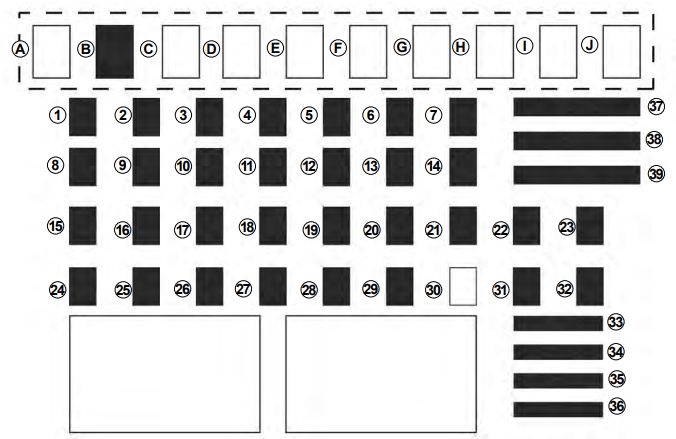Learn about Dacia Logan fuse box and relay’s locations, functions, and maintenance tips for optimal vehicle electrical system.
The Dacia Logan, known for its affordability and practicality, is available in several body styles, including the sedan, station wagon (Logan MCV), and a pick-up version. Each body style caters to different needs, from family transport to cargo handling, while maintaining Dacia’s reputation for simplicity and robustness.
The electrical system plays a key role in the Logan’s functionality, with its fuse box and relays managing vital components like lighting, power windows, and the air conditioning system. The fuse box is typically located under the dashboard or in the engine compartment, depending on the model. The relays, located nearby, control larger electrical loads like the fuel pump or wipers. Regular checks of fuses and relays are essential for preventing electrical issues, ensuring that features such as headlights, starter motors, and other systems operate reliably. Given the Logan’s minimalist yet efficient design, understanding the fuse box layout and relay functions is crucial for addressing any electrical malfunctions efficiently.
MUST READ: DYI – How to Check Car Fuses?
(…) Dacia Logan fuse box and relay with Diagram
WARNING
- Never replace a fuse with one that has a higher amperage rating.
- A fuse with a too-high amperage could damage the electrical part and cause a fire.
- On no account should fuses be repaired (e.g. patched up with tin foil or wire) as this may cause serious damage elsewhere in the electrical circuit or cause a fire.
- If a fuse blows repeatedly, do not keep replacing it. Instead, have the cause for the repeated short circuit or overload tracked and fixed.
- Terminal and harness assignments for individual connectors will vary depending on vehicle equipment level, model, and market.
Dacia Logan fuse assignment
Year of production: from …
Passenger compartment

| № | Component |
|---|---|
| A | Empty location |
| B | Driver’s side window winder |
| C | Empty spaces |
| D | Empty spaces |
| E | Empty spaces |
| F | Empty spaces |
| G | Empty spaces |
| H | Empty spaces |
| I | Empty spaces |
| J | Empty spaces |
| 1 | Front electric window |
| 2 | Left-hand main beam headlight |
| 3 | Right-hand main beam headlight |
| 4 | Left-hand dipped beam headlight |
| 5 | Right-hand dipped beam headlight |
| 6 | Left-hand side lights |
| 7 | Right-hand side lights |
| 8 | Rear electric windows |
| 9 | Rear fog lights |
| 10 | Horn |
| 11 | Automatic door locking |
| 12 | ABS-ESC, brake switch |
| 13 | Interior lights, window winder, air conditioning, boot light |
| 14 | ESC |
| 15 | Reverse gear, windscreen wipe |
| 16 | Cruise control/Speed limiter, heated door mirrors, rear windscreen, unfastened seatbelt warning, parking distance control, multimedia, heated windscreen |
| 17 | Daytime running lights |
| 18 | Brake lights |
| 19 | Injection |
| 20 | Airbag |
| 21 | LPG circuit shut-off or LPG circuit and petrol fuel circuit shut-off or sequential gearbox or automatic gearbox |
| 22 | Power-assisted steering |
| 23 | Location reserved for additional equipment |
| 24 | Direction indicator light |
| 25 | Passenger compartment ECU |
| 26 | Passenger compartment ECU |
| 27 | Steering column control |
| 28 | Location reserved for additional equipment |
| 29 | Steering column control |
| 30 | Empty location |
| 31 | Instrument panel |
| 32 | Radio |
| 33 | Cigar lighter |
| 34 | Diagnostics and radio socket |
| 35 | Defrosting rearview mirror |
| 36 | Electric door mirrors |
| 37 | Starter |
| 38 | Windscreen wiper |
| 39 | Passenger compartment ventilation |
Conclusion
For owners and enthusiasts of classic Dacia Logan, understanding the fuse box and relay systems is essential for vehicle maintenance. Regular inspection and maintenance of these components helped ensure the vehicle’s longevity and reliability, preserving its status as a symbol of Dacia’s craftsmanship and innovation in the automotive industry during that era.








